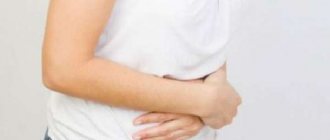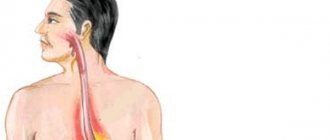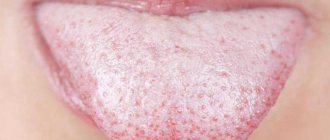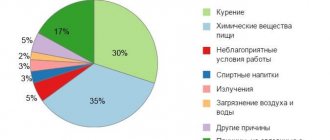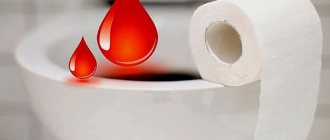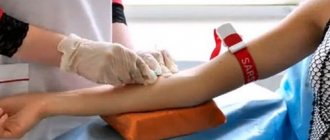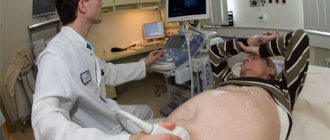Short description
What is this, sphincter? This is a formation of muscle tissue that records the transition of contents throughout the body. The sphincter ring takes on the main task: contraction or narrowing. Such a formation can change in configuration, relax or tense. Muscles take part in many processes, for example, during communication or digestion of food.
Sphincter of the rectum
Disturbances in the functioning of the sphincters often leave an imprint on health. A person may suffer from frequent vomiting and bile entering the esophagus caused by reflux.
Types of pathology
Often this pathology is not an independent disease, but is part of a complex of symptoms of some other disease.
Spasm affecting the rectal sphincter area can be divided into several types depending on how long the patient suffers from the pathology:
- rapid spasm (it stops on its own in a short time);
- prolonged spasm.
Also, spasm of the anal sphincter of the rectum is divided into two large groups depending on the reasons that provoked the pathology:
- primary spasm (quite rare, develops on its own);
- secondary spasm (occurs much more often, as it accompanies the course of some pathological processes in the rectum and, if not treated, can worsen).
Often, involuntary painful contractions of the rectal sphincter occur in attacks, between which there are long periods of asymptomatic course of the pathology.
Often an attack can develop in response to an emotional shock or stress.
Diagnosis and treatment of this disease must be carried out in a timely manner and as fully as possible in order to eliminate not only the symptom itself, but also the cause of its occurrence.
Varieties
Sphincters are different in structure and are characterized in various aspects:
- Anatomical. Their presence can be seen from the outside.
- Functional. Located inside the body.
- Striated. Regulated by the brain.
- Involuntary. They open and close when food is digested.
The most basic sphincter muscles can be classified into two categories:
- Pancreatic and biliary spheres.
- Colon, digestive and excretory systems.
The correct functioning of these organs prevents the development of such severe pathology as pancreatitis. If there is a disturbance in the functioning of the gastrointestinal tract, where the sphincter of Oddi is located, then reflux is diagnosed, which has a detrimental effect on the pancreas.
The involuntary urinary sphincter is located in the pelvic area. As in the gastrointestinal tract, it is responsible for regulating the movement of biological materials to other organs, facilitating the movement of food, as well as urine and excrement.
Reasons for development
Oddly enough, there are many causes of sphincteritis. The development of inflammation of the sphincter muscles can be caused by hemorrhoids, fissures in the anus, frequent constipation or other pathologies.
The independent development of sphincteritis is impossible; it is the result of other diseases in the anal area.
Other factors that can trigger the development of inflammation of the sphincter muscles include:
- bacterial anal infections;
- disorders of the gastrointestinal tract;
- spicy food;
- tumor formations in the rectum;
- injury to the anus during anal sex;
- frequent spastic constipation (when hard-formed feces pass through the sphincter, the muscles of which are in good shape);
- intestinal disorders that cause severe irritation of the anal mucosa
The etiology of the disease is very diverse. Usually several factors contribute to its development simultaneously. Most often, the inflammatory process in the anal canal occurs as a response to hemorrhoids, constipation, anal fissures and other proctological pathologies.
As an isolated disease, rectal sphincteritis develops extremely rarely. In most cases, inflammation of the sphincter is an undesirable complication of chronic anorectal diseases. Thus, injuries to the hemorrhoids during hemorrhoids, damage to the anal canal due to solid feces during constipation, cracks in the rectal mucosa are the entrance gates for various types of infections.
Other reasons that directly or indirectly contribute to the development of the disease include:
- chronic inflammatory and infectious processes of the gastrointestinal tract;
- prolonged diarrhea, intestinal dysbiosis;
- sexually transmitted diseases (during anal sex);
- benign and malignant tumor diseases of the rectum;
- malfunctions of the immune system (autoimmune pathologies) associated with hereditary predisposition;
- inflammatory processes in the reproductive and urinary organs;
- poor nutrition, insufficient amount of fluid in the diet;
- lack of physical activity, sedentary lifestyle;
- general or local hypothermia of the body;
- radiation therapy (during treatment for rectal cancer);
- alcoholism;
- other factors.
There are quite a few reasons that provoke the disease, but they can all be united by one phrase: “concomitant pathologies of the gastrointestinal tract and rectum.” These include:
- cholelithiasis;
- chronic cholecystitis;
- duodenitis;
- angiocholitis;
- duodenal ulcer;
- chronic pancreatitis with hypertonicity;
- dysfunction of the sphincter of Oddi.
THIS IS REALLY IMPORTANT! Right now you can find out a cheap way to get rid of hemorrhoids... FIND OUT >>
The pathology can be caused by cholangitis.
- parasitic infestations;
- oncology;
- poor nutrition;
- chronic diseases;
- autoimmune pathologies;
- ulcerative lesions;
- cholangitis;
- cholelithiasis;
- pancreatitis;
- hypothermia.
Diagnosis of sphincter spasm
When diagnosing anal sphincter spasm, collecting complaints and anamnesis of the disease plays an important role. Often past injuries, diseases of the rectum and genitourinary system, pathology of the nervous system or severe emotional lability are determined.
Primary proctalgia is often combined with spasms of smooth muscles of other organs and patients have previously turned to other specialists.
Diagnosis of “proctalgia syndrome” is carried out with a mandatory examination of the patient and determination of the presence of other diseases that may clinically manifest as spastic pain in the rectum.
Examination of patients includes:
- examination of the anus;
- digital examination of the anal canal (with primary proctalgia, this type of examination does not cause discomfort);
- an in-depth examination of the rectal wall is performed through sigmoidoscopy;
- If it is necessary to examine the colon, a colonoscopy or irrigoscopy is performed.
Anatomical structure of the sphincter of Oddi
The absorption of digestive components occurs in the small intestine. The colon can only absorb water and also move excrement. Each part has sections that retain products and facilitate their movement.
According to statistics, anal pathologies are a fairly common occurrence. Often this part of the human body is subject to serious consequences. These may include anal fissures, spasms, which are often accompanied by itching of the anus. All this causes a person a lot of problems.
Crack in the anus
If the functioning is not impaired, the muscles retain feces during coughing, physical activity, movement, sneezing, etc.
Sphincter in women: what is it? The anus of the fairer sex is located close to the vagina. In turn, it is important to know what it is: the sphincter in men. This opening is aligned with the prostate gland.
In women, these organs are interconnected by a thin layer that does not interfere with the proliferation of disease processes. Often this phenomenon leads to the formation of fistulas, which injure or severely tear the perineum during the birth of a child.
1. Complex muscle of the duodenal papilla, consisting of:
- muscle - compressor of the base of the papilla;
- muscle - dilator of the papilla;
- muscle - compressor papilla, or sphincter of Westphal.
2. Own sphincter-common bile duct.
3. Proper pancreatic sphincter duct.
The human digestive system contains 35 sphincters - obturator muscle valves responsible for the passage of biological substances from one organ to another.
Inflammation of the tissues of any sphincter in the body is called sphincteritis. Rectal sphincteritis is an inflammatory process of the anal valve apparatus.
Digestive sphincters: classification
The following types of pathology are determined:
- According to forms of development: catarrhal sphincteritis;
- erosive;
- erosive-ulcerative.
The digestive system includes sphincters such as:
- The sphincters of the esophagus are divided into upper and lower sphincters.
- Sphincters located in the stomach.
- Sphincters related to the duodenum area, which are divided into the following types:
- Pyloric and Ochsner sphincter;
- Bulboduodenal;
- Prepapillary;
- Suprapapillary;
- Infrapapillary;
- Duodenojejunal.
- Sphincters of the pancreatic system and biliary system, among which are:
- Oddi is a smooth muscle structure that is located in the duodenal major papilla, prevents the ducts from refluxing intestinal contents, and is also responsible for the flow of juice (pancreatic) and bile into an organ such as the duodenum;
- Westphalia - a sphincter that prevents the connection of the duodenum and ducts leading to other parts of the digestive system;
- Bile (common) duct;
- Mirizzi. It is located at the confluence of parts such as the bile duct and the cystic canal;
- Helly. This sphincter belongs to the orbicularis muscle located in the duodenal papilla (minor). It is a kind of valve for the ducts to the pancreatic gland.
- Lutkens. It is located in the zone of transition of the cystic duct to part of the gallbladder (its neck);
- Sphincter of the pancreatic duct.
In total, there are about 35 different sphincters in the digestive system.
How to relax the rectal sphincter? Rectal sphincter spasm: symptoms and treatment
Sphincter spasm is considered a symptom of the disease. It manifests itself as painful sensations in the rectal area. Since pain and discomfort in the anal area appear with all proctological diseases, the diagnosis of “sphincteritis” is made in the absence of other pathologies of the anus of an organic type and the real causes of pain are identified, after which the necessary treatment is prescribed.
Severe pain that eventually turns into spasms can be caused by various reasons:
- Anal fissures.
- Irritation of the mucous part.
- Injuries and damages of various types.
- Hemorrhoids.
- Imbalance of intestinal flora.
- Chronic stool disorders.
- Unhealthy eating.
- Sedentary lifestyle.
- Hypothermia.
- The presence of neoplasms in the anus.
Today we would like to discuss a sensitive issue. The functioning of the gastrointestinal tract largely determines our well-being, vigor and good mood.
Moreover, it is important not only proper nutrition, but also stable emptying so that the body does not waste waste products.
It’s very good if you have never encountered such problems, and morning toilet does not cause unpleasant associations. But most people know firsthand what a spasm of the rectal sphincter is.
The symptoms are extremely unpleasant; they include pain and distension in the lower abdomen, which are difficult to cope with without taking antispasmodic drugs. Today we will talk about this phenomenon and ways to combat it in a little more detail.
Types of anal sphincter spasm
Depending on the duration of the attack, there are:
- rapidly passing (transient) spastic proctalgia;
- prolonged proctalgia.
According to the etiological factor, this pathology is classified:
- primary spasm of the anal sphincter (neurotic spasm of the muscles of the anus or coccygeus muscle);
- secondary proctalgia (manifests against the background of functional or organic pathology of the rectum: fissures, hemorrhoids, Crohn's disease or tumors localized in the anal canal).
Fleeting (passing) proctalgia manifests itself in the form of sharp pulling or stabbing pains in the anus that suddenly appear within a short period of time. The pain in most cases radiates (gives) to the tailbone, hip joints and is often accompanied by severe discomfort in the perineal area. Therefore, patients perceive this symptom as a pathology of the urinary or reproductive system (diseases of the prostate gland, bladder, kidneys, urethra, uterus or its appendages).
Prolonged pain continues for a long period of time, and there is often no response to pain relief.
This disease has a wave-like course, and after a certain time the frequency of pain increases. The factors that cause exacerbation and increase in pain are not completely defined and are more often associated with the emotional state (stress, physical and psychological overexertion).
All these problems require timely consultation with a specialist, diagnosis and treatment.
Spasm of the rectal sphincter with hemorrhoids
The most common causes of secondary anal sphincter spasm are anal fissure and hemorrhoids. With prolonged existence of cracks or exacerbation of hemorrhoids, active irritation of nerve endings occurs due to damaged mucous membrane, swelling and hyperemia of the inflamed area, enlargement of hemorrhoids, paraproctitis often causes a sharp pain syndrome, which is a consequence of spastic contraction of the anal sphincters. Most often, muscle spasm in these pathologies is associated with the act of defecation, which differs from primary proctalgia. Severe spasm of the external or internal anal sphincter that occurs after defecation lasts for hours and may continue until the next bowel movement.
This creates a vicious circle - organic pathology of the rectum (crack, inflammation of the hemorrhoid, tumor, ulcerative lesions of the mucous membrane) causes sharp pain, severe pain leads to spastic contraction of the smooth muscles of the sphincter, in some cases to their convulsive contractions, and this only intensifies the pain . Spasm of the anal sphincter during hemorrhoids is considered one of the signs of hemorrhoids.
Features of the treatment of rectal sphincteritis
Hemorrhoids often lead to various complications. When hemorrhoids become inflamed, there is a risk of developing sphincteritis. This pathology is very common.
Rectal sphincteritis can develop not only due to hemorrhoids. Proctitis, chronic pancreatitis, duodenitis and other inflammatory diseases of the gastrointestinal tract can lead to the development of the disease.
How to treat sphincteritis? This disease is treated with medications, physiotherapy and dietary supplements. In some cases, surgical procedures are resorted to.
For treatment of a disease to be effective, it is necessary to eliminate the causes that provoked its development. The main goals that the attending doctor must adhere to:
- normalization of the balance of enzymes and microflora in the intestine;
- suppression of the development of acute forms of pancreatitis or cholecystitis;
- symptomatic therapy to improve the patient’s condition;
- elimination of intoxication and restoration of bowel function.
Treatment methods can be divided into 3 separate categories: conservative, folk, and surgical treatment. The latter method is used if there is a threat to the patient’s life - with sphincter necrosis, extensive abscesses with pus, sepsis.
The first thing the doctor does after making an accurate diagnosis is to try to remove inflammation, which can cause the formation of erosions and ulcer-like phenomena, improve the process of bile outflow and relieve spasms. In other words, at this stage, treatment is aimed at relieving symptoms.
In addition to drug therapy, the patient needs:
- pay increased attention to the hygiene of the anal area;
- follow a diet.
You should give preference to sweaty meat and lean fish, eat eggs, low-fat cottage cheese, drink compote, jelly. Fatty and fried foods, fruits and vegetables without heat treatment should be avoided.
When conservative treatment is unsuccessful, surgical intervention is performed, including:
- choledotomy;
- transcapillary drainage of the bile duct;
- papillosphincterotomy.
Traditional medicine recommends getting rid of the symptoms of the disease with the help of disinfecting sitz baths, microenemas with herbal teas and rectal tampons, as well as homemade suppositories with medicinal herbs. Although the safety of traditional methods is beyond doubt, you should not resort to them without consulting a specialist.
First of all, to clarify the diagnosis, you need to undergo a comprehensive diagnosis, which includes:
- examination of the patient by a proctologist using palpation;
- blood tests for biochemical, immunological and cytological parameters;
- stool analysis;
- performing rectoscopy of the anus.
Treatment with suppositories for symptoms of rectal sphincteritis is carried out in acute forms of the disease. They use rectal suppositories such as Posterizan, Relief, Proctoglivenol, or others. They quickly help relieve pain and heal the affected areas.
How to relax the sphincter? To do this, use a special blockade, which includes relieving pain and relaxing the sphincter muscles.
Thanks to this procedure, the patient’s process of natural emptying is simplified. It is performed as follows: a syringe with an anesthetic substance is inserted into the anus and the anus is closed with a tampon with glucosteroid ointment. The tampon is in the anus until the first urge to defecate.
. The course depends on the form and degree of the disease and is selected individually by the doctor.
In some cases, complex concomitant disease may require surgery followed by antibiotics.
A prerequisite for increasing the effectiveness of treatment is adherence to a strict diet and moderate physical activity. Examples include “Proctosan”, “Bezornil”, “Aurobin”, “Heparin ointment”, etc.
A very popular method of treating the inflammatory process in the sphincter is sphincterotomy. This operation is performed under general anesthesia. The doctor removes a small area of skin on the anus and makes a small incision in the sphincter. This helps the muscles relax and normalize the process of natural emptying.
There are four forms of the disease. Each of them characterizes the degree of progression of the pathological process:
- Catarrhal sphincteritis. It begins with catarrhal (inflammatory) damage to the sphincter mucosa. With instrumental diagnostics, you can see slight swelling of the membrane, slight redness, and separation of serous secretion. The catarrhal form lasts several days, after which, without proper treatment, it becomes erosive.
- Erosive sphincteritis. The longest form of the disease. It develops as a reaction to systematic injury to the inflamed sphincter with feces. It manifests itself as single, and over time, numerous erosions on the mucous membrane of the rectal valve. May be accompanied by minor bleeding and discharge of pus.
- Erosive-ulcerative sphincteritis. The transitional stage between the second and last – the most severe form of the disease.
- Ulcerative sphincteritis. The most neglected form. Characterized by the formation of ulcers from recent erosions. The depth and number of ulcerative defects varies, but they all affect the muscular layer of the anal sphincter, which reduces the quality of its functioning.
Rectal sphincteritis is characterized by an acute or chronic course. An acute process is always accompanied by pronounced symptoms, while a chronic one manifests itself subclinically (hidden). Despite this deceptive picture, acute sphincteritis is much easier to cure.
Children suffer from sphincteritis less often than adults. The childhood form of the disease is most often a consequence of anal microtrauma due to chronic constipation or cryptitis - inflammation of the crypts of the anus. Untreated cryptitis not only provokes an inflammatory process in the tissues of the valve apparatus, but often causes inflammation of the mucous membrane of the entire distal rectum.
Therapy for sphincteritis in children includes:
- dietary nutrition;
- frequent washing;
- baths of a decoction of medicinal herbs or a solution of potassium permanganate;
- local use of anti-inflammatory and antiseptic agents;
- taking homeopathic medicines;
- the use of antihistamines (in the case of an allergic nature of the disease).
It is not difficult to suspect sphincteritis in a child. At first, children complain of discomfort and itching in the anus. After pain appears, the baby refuses to go to the toilet, afraid of experiencing pain during bowel movements.
The capabilities of modern medicine make it possible to diagnose the disease without much difficulty. It is much more difficult to choose the right and effective treatment. This task is often complicated by the inability to identify the root cause of the disease.
To make a correct diagnosis, the proctologist carries out:
- collection of anamnestic data (symptoms and nature of the disease);
- external examination of the anal area in combination with digital examination;
- analysis of data obtained from the results of a clinical blood test;
- study of the results of rectal proctoscopy.
To identify the causes of sphincteritis, an immunological and cytological study, a biochemical blood test and a coprogram (stool examination) may be needed. In difficult cases, they resort to irrigoscopy and colonoscopy.
Carrying out treatment
After conducting research, the doctor will be able to determine what caused the anal sphincter insufficiency. Depending on the form of the disease, its severity, accompanying signs and localization of the pathological process, treatment is prescribed. Violation of the retention mechanism is treated conservatively and surgically.
The basis of conservative treatment is stimulation of neuro-reflex functions. It is carried out for patients with an inorganic form of insufficiency of the anal sphincters. In the organic form of the disease, training of reflexes of the anal muscles is carried out before and after surgery. This is done using electrical stimulation, which helps strengthen the muscles of the anus. The course is 10−15 days. Contraindicated in cases of high sensitivity of the anal canal receptors. Physical therapy, which is complemented by breathing exercises, helps well. Strength exercises are excluded. The goal of gymnastics is to strengthen the sphincter apparatus. During treatment, a diet is followed: limited consumption of “slagged” foods and liquids. Additional medications are prescribed to improve nerve conduction. These are preparations of B vitamins, ATP, prozerin, anabolic steroids.
The method of biological self-regulation helps to influence the functions of the sphincter through voluntary volitional efforts.
Psychotherapy is carried out: biofeedback (BFB) or biofeedback” (English term). First used in Israel. The essence of the method is to teach the patient self-regulation. Special exercises allow him to understand the disturbances in the functioning of the organ and influence its functions with voluntary volitional efforts. This effect is achieved through muscle relaxation (relaxation). The doctor monitors changes in the state of brain function using an electroencephalogram. The purpose of biofeedback is the restoration of nervous regulation after stress or due to functional disorders, conscious control of the anal sphincters. There are two types of method: power and coordination. With force, a balloon is inserted into the rectum, which the patient squeezes with voluntary movements. Such efforts help strengthen the muscles. The coordination method uses electrical stimulation in response to stretching of the anal capsule.
In case of organic form of weakness of the sphincters of the anus, its mechanical damage, surgical treatment is performed. If there is a large area of scar formation or significant stretching of the walls of the anal canal, surgical intervention is performed. Surgical treatment is not performed when there are disturbances in the nervous regulation of the pelvis. The main types of operations are sphincteroplasty and Stone's operation. During the manipulations, the affected scar tissue is excised in the first case. The second type of surgical intervention is performed for patients with congenital sphincter abnormalities. The distal section of the rectum is moved to the healthy section of the obturator apparatus (if it is damaged, gluteoplasty is performed using the muscles of the buttocks). Modern surgery makes it possible to cure insufficiency of the anal sphincters and strengthen them. These operations are complex. They should be performed by proctological surgeons.
Causes of the disease
The main symptom is pain in the anus, which occurs during bowel movements. The symptom is in the nature of attacks and radiates to the perineum or lower pelvis. Manifestations may occur during defecation, disappear or decrease after it.
Other complaints:
- Burning sensation in the posterior orifice.
- Purulent or bloody discharge.
- Vomiting or nausea.
- Concentrated urine.
- Discoloration of stool.
- Dizzy states.
- Exhaustion and loss of strength.
Digital examination of the rectum
People with such problems often put off visiting the doctor. This can lead to constipation and other unpleasant consequences.
What to do to strengthen the sphincter
After a thorough examination, the doctor will find out what causes this problem. Taking into account the severity of the disease, characteristic manifestations and prevalence of the pathological process, therapy will be prescribed. Conservative and surgical treatment methods can be used. When the problem develops, special gymnastics helps to strengthen the pelvic muscles.
Weakening of the rectal sphincter requires increased attention. Under no circumstances should the situation be left to chance . Even completely healthy people, as well as those who have certain gastrointestinal pathologies - there are symptoms of sphincter of Oddi insufficiency, cardiac sphincter insufficiency, etc., are useful to do a set of special strengthening exercises. Patients should engage in therapeutic exercises aimed at strengthening the pelvic muscles.
The following helpful exercises will help strengthen your anal muscles and reduce your suffering. Do them one by one:
- Stand up straight and completely relax. Then squeeze the pelvic muscles as much as possible and do this about ten times.
- Take a horizontal position on your back, legs should be straight, at an angle of 90 degrees. The exercise must be performed at least 10 times.
- Squats provide enormous benefits.
Remember that the most important thing is the systematic implementation of the listed actions. If you started exercising, felt relief and immediately stopped training, this will not lead to anything good.
Research Measures
If these symptoms occur, a number of diagnostic tests need to be performed. If a spasm is a concern, the doctor will definitely take into account the person’s complaints and medical history. An important factor is the psycho-emotional state.
Types of research:
- Digital examination of the rectum.
- Results of blood and urine tests.
- Sigmoidoscopy.
- Colonoscopy.
At the first symptoms of pathology, you should consult a doctor
You should always keep your body in good shape. The health of the sphincters and their muscles depends on this. To avoid trouble, you should follow these preventive measures:
- Follow the principles of hygiene, thoroughly rinse the perineum and back after each bowel movement.
- Eat properly. It is worth completely eliminating everything fatty and spicy from your diet.
- It is useful to take baths with salt, chamomile and other herbs.
- During a lull in the illness, do special gymnastics aimed at restoring muscles.
- Drink vitamins and minerals.
The most common diseases of the rectal sphincter are: spasm and sphincteritis. A photo of inflammation of the rectal sphincter can be seen below.
In the first case, this is a chronic form of the disease, in which a person experiences constant pain and discomfort in the anal area. This disease develops over a long period of time and causes severe discomfort to the patient’s life. Therefore, it is recommended not to delay the treatment of this problem.
Sphincteritis is an inflammatory process in which its muscles become inflamed. This disease is characterized by wave-like exacerbation; treatment takes a long period of time. Below is a photo of rectal sphincteritis.
Danger of condition
To relieve pain symptoms, it is necessary to identify the cause of the spasms and then eliminate it. The pathology itself is not complicated; it is diagnosed and then successfully treated. Symptoms of rectal sphincter spasm are more often characteristic of those who have reached the age of forty, and people are susceptible to the disease, regardless of gender. The frequent occurrence of symptoms is caused by good innervation of the rectal posterior wall. Reflexogenic tissue is concentrated in it, causing severe spasms when:
- frequent constipation;
- defects of the mucous surface;
- cracks on it;
- inflammatory processes.
With an unhealthy nervous system or autonomic pathologies, rectal sphincter spasms can provoke neurological symptoms. At the same time, the emotional background worsens and insomnia occurs. Although the characteristic symptoms of rectal sphincter spasm are similar to the signs of a disease such as coccydynia, these are different diseases. Symptoms of spasms are possible in people who have suffered injuries to organs located in the pelvis, difficult childbirth, or after treatment of a complicated adhesive process. Often the symptoms of rectal spasms are characteristic of women whose emotional background is too unstable. Hysteria and neurasthenia often provoke problems in the anal area.
Symptoms of rectal sphincter spasm are usually classified according to the duration of ongoing attacks of pain. There are short or long proctalgia. Otherwise, the classification of pathology is simple. According to the etiology of the disease, there are primary stages or secondary proctalgia. Causes recent rectal pathologies, which include hemorrhoids, neoplasms, Crohn's disease or anal fissure.
Signs of short-term pain provoke sharp stabbing or pulling painful sensations localized in the anus. Almost always, the pain radiates to the tailbone, which is why patients complain of discomfort in the lower peritoneum, unable to accurately show the painful spot. When a spasm is felt in the perineum, a person often associates this condition with a pathology of the genitourinary system, however, this is completely untrue. Severe spasms resemble convulsions, and this is extremely frightening for patients, provoking a depressed psychological state.
Therapeutic tactics
The most popular treatment methods for the appearance of muscle spasms:
- Use of antiseptic suppositories.
- Pharmaceutical products containing nitroglycerin.
- Relaxation techniques: taking warm baths with herbs and medicinal plants.
- Unconventional therapy.
- Surgical intervention.
Therapy takes a comprehensive approach. Any therapeutic tactics must be combined with adherence to the principles of personal hygiene and diet.
The tactics of therapy directly depend on the general state of health, the presence of chronic ailments and restrictions on taking pharmaceutical drugs. The doctor's goal is to eliminate the causes that contribute to the appearance of spasms.
The pharmaceutical course of therapy involves taking laxatives, antispasmodics, and painkillers.
Antibacterial drugs are prescribed if the disease is expressed by acute infectious diseases.
You can relieve spasms using the following methods:
- Warm baths.
- Physiotherapeutic measures.
- Pharmaceuticals.
- In unconventional ways.
If the therapy does not produce the desired results, then surgery is performed. This leads to muscle relaxation and reduced soreness.
Prevention
The ideal prevention is timely diagnosis and proper treatment of inflammation that occurs in the internal organs of the gastrointestinal tract. Balancing your diet and giving up alcohol and smoking is of great importance, as it allows you to normalize all processes in the intestines.
The prognosis is based on the duration of the disease, the presence of persistent deformation of the bile and pancreatic ducts, as well as the patient’s response to treatment.
Rectal sphincteritis is far from a harmless disease. In most cases it lasts for a long time. The patient experiences physical as well as psychological suffering, some patients even develop cancerophobia. That is why correct diagnosis with identification of the causative factor, as well as timely and competent treatment, is very important. Don't delay your visit to the doctor.
To prevent the development of the disease and its complications, it is necessary to promptly treat diseases that provoke the development of sphincteritis: hemorrhoids, anal fissures, cholecystitis, pancreatitis, etc. It is recommended to follow a dietary diet, use food that does not damage the intestines during bowel movements, and saturate the diet with vitamins. Sphincteritis can be completely cured if all the doctor's instructions are followed.
Sphincter insufficiency: diagnosis
The pathology may be accompanied by involuntary release of gases or feces while awake or during sleep. The range of manifestations of sphinceter weakness depends on the degree of the disease. In the first degree, only the release of gases is diagnosed. The second degree is characterized by involuntary release of gases and loose stools. In the third degree of insufficiency, the patient cannot hold formed feces, he complains of diarrhea, flatulence, frequent and involuntary bowel movements, and feels the need to use special hygiene products for patients with incontinence.
Insufficiency of the external sphincter, as a rule, leads to involuntary bowel movements when the intestines are full while awake. Pathology of the internal sphincter is accompanied by involuntary release of feces during sleep.
During a physical examination of the patient, the specialist first of all pays attention to the symptom of sphincter gaping.
Scar formation of the rectal ampulla can be identified by digital examination, which also allows one to evaluate the closure function of the organ.
In case of insufficiency of the anal sphincter, functional diagnostic methods are the most informative. Thus, sphincterometry allows you to accurately assess the contractile function and tonic tension of the sphincter structures and lower parts of the colon.
This method helps the specialist determine exactly which changes have the greatest impact on the functions of the organ.
The study of the reflex function of the sphincter apparatus is of great importance. The method involves applying a special probe to the skin in the anal area. This irritant causes a reflex contraction of the rectal structures. During this process, the doctor assesses the physiology of the process and monitors the degree of changes in the obturator apparatus.
In some cases, diagnosis involves the use of anoscopy and sigmoidoscopy. These techniques make it possible to detect changes in the epithelial tissue of the rectum, identify the presence of scars and strictures.
X-ray examination using a contrast agent allows you to evaluate the anorectal angle, examine the relief features and morphological changes of the rectum. If indicated, the examination is supplemented with irrigoscopic examination (x-ray examination with the introduction of a contrast agent through the rectum for better visualization). If there are suspicions of concomitant pathologies of the rectum, a colonoscopy is performed.
